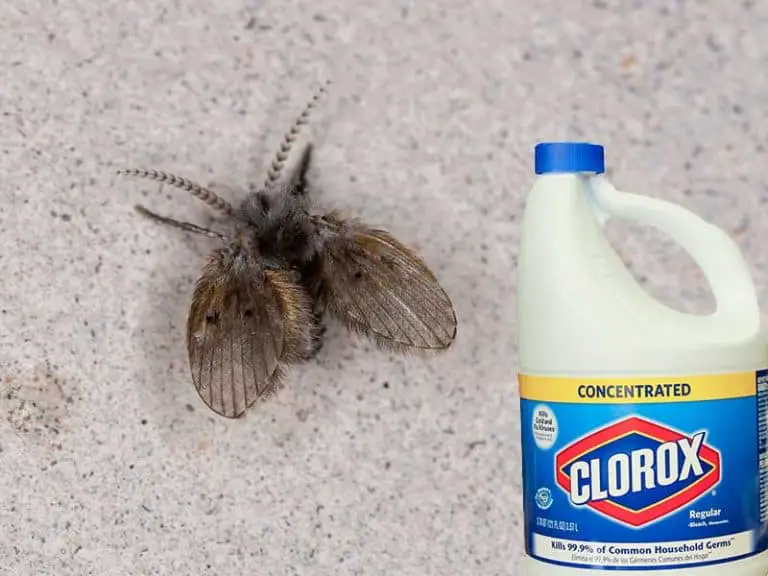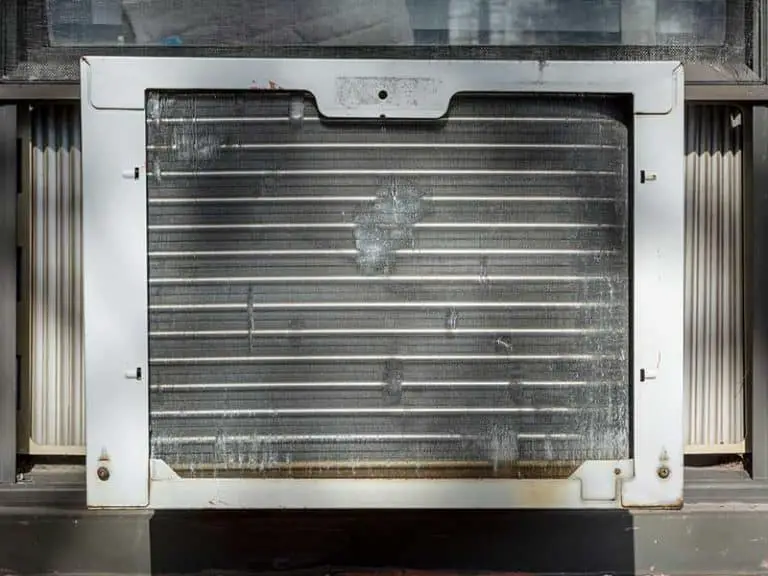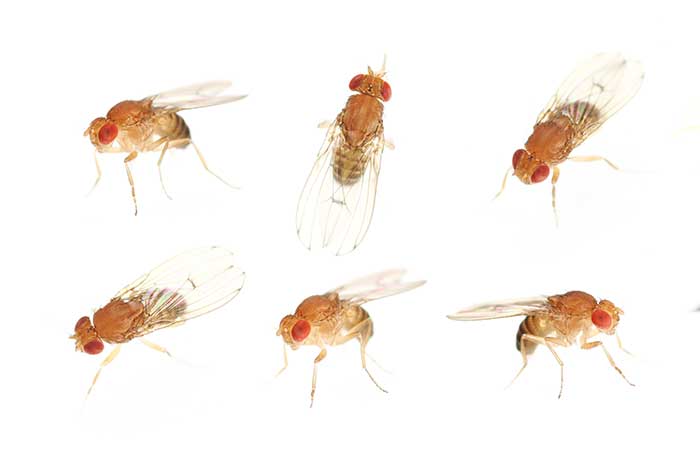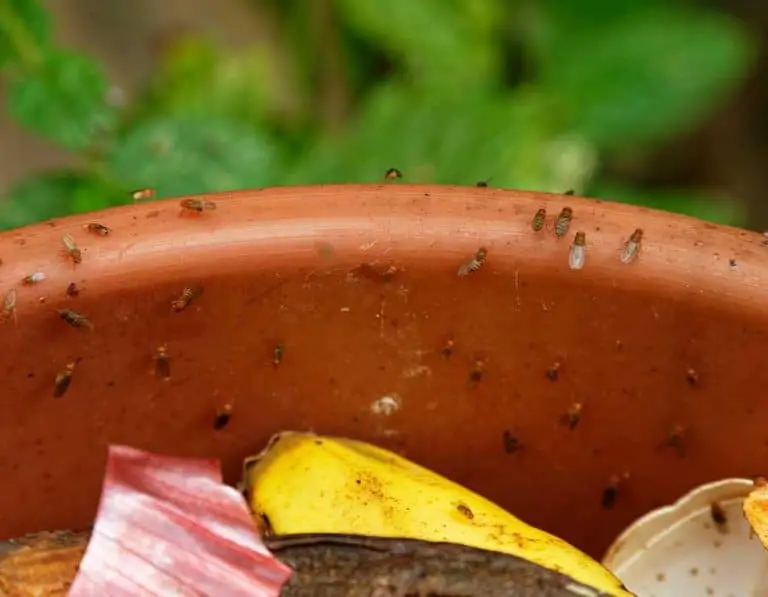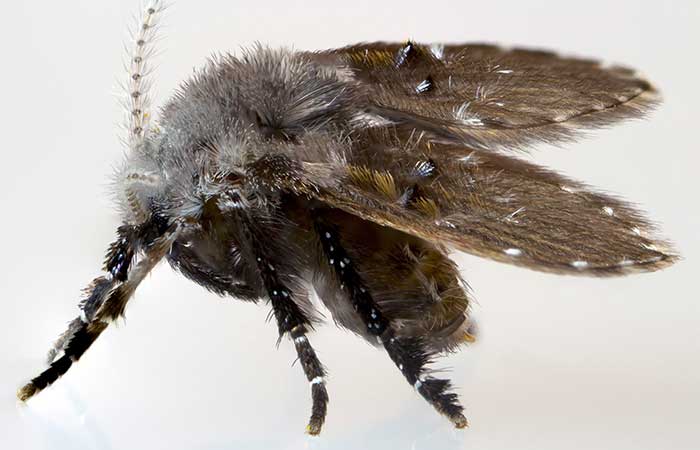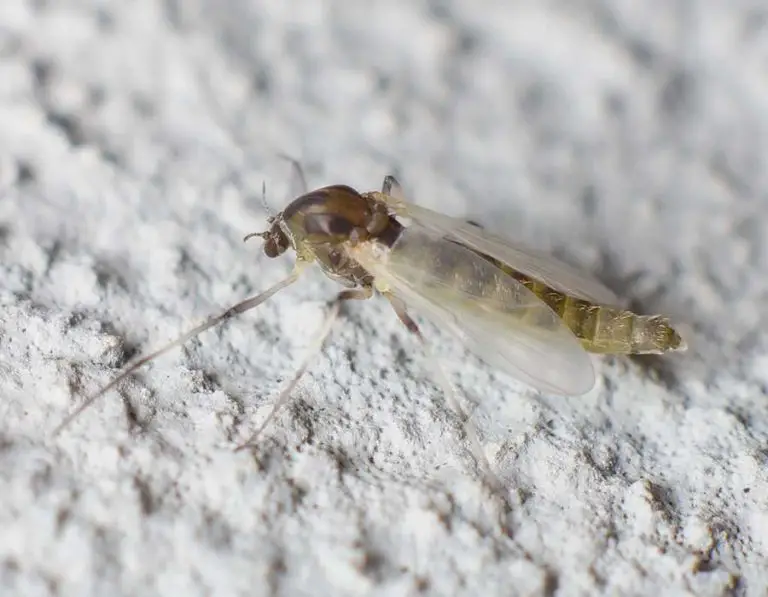Drain Fly Larvae In Toilet: What You Should Do?
So, you peeked into your toilet and spotted something you least expected: unsightly worms. These brown and black-looking worms aren’t actually what they appear to be; they are the larvae of drain flies.
What could be more frustrating than finding an intruder in your toilet bowl? Not only does it prevent you from doing your business, but if you’re high-maintenance, it can be a downright nightmare for you.
Fortunately, science has advanced, and so have the methods to get rid of unwanted pests. Stick with us as we explain ways to eliminate this creepy bug’s larvae from your bathroom permanently.
What Are Drain Flies?
Drain flies, technically called Psychodidae, go by various other names, including sewer gnats, moth flies, and sink flies.
Their size is similar to fruit flies and gnats – around 2-5mm. Nonetheless, their moth-like, fuzzy, and grey bodies are what sets them apart from other bugs. Besides, their antennae are long and covered in hair.
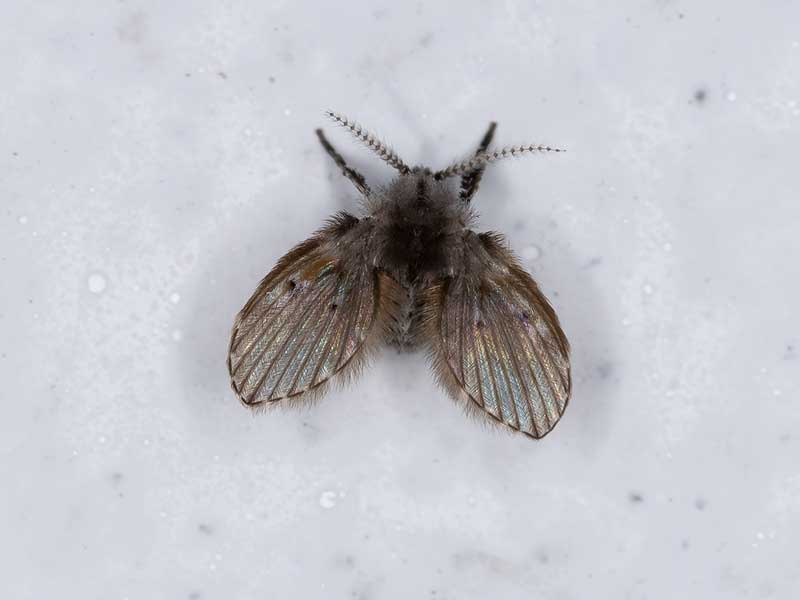
Although they appear like moths, they cannot fly afar. In fact, they hop from one place to another instead of flying around your toilet like other bugs.
Their lifespan typically ranges from 8 to 24 days. What’s surprising, however, is that they can lay up to 300 eggs in less than 48 hours!
Their eggs are pretty small and creamy brown, and larvae are around ⅜ inches long – typically legless and wormlike.
Why Do Drain Flies Choose to Breed In the Toilet?
Drain flies do not choose to breed in the toilet, they prefer breeding in a specific, suitable atmosphere, and if your home provides one, there’s no reason why they wouldn’t multiply.
These furry creatures love to lay eggs anywhere with lots of dampness or decaying organic matter. This could be showers, tub drains, sinks, or other places.
Because they are fond of moisture, you’ll commonly see them outdoors, closer to standing water or sewage pipes.
Therefore, it isn’t uncommon for you to find them in your toilet. A bathroom is probably the only place with standing water and sewage remains in your home.
Even if you follow the best cleanliness habits, it doesn’t entirely guarantee drain fly infestation prevention.
Where Do They Come From?
If you’re cautious about keeping your entire home clean – including your toilet – spotting drain fly larvae would not make sense to you to begin with. As such, you’ll wonder, “Where do they come from?”
The bad news is that drain flies go after stagnant water – even if it collects a tiny amount of sewage and bacteria. Perhaps you cannot claim your toilet to be 100% bacteria-free. So, they might make their way into your bath.
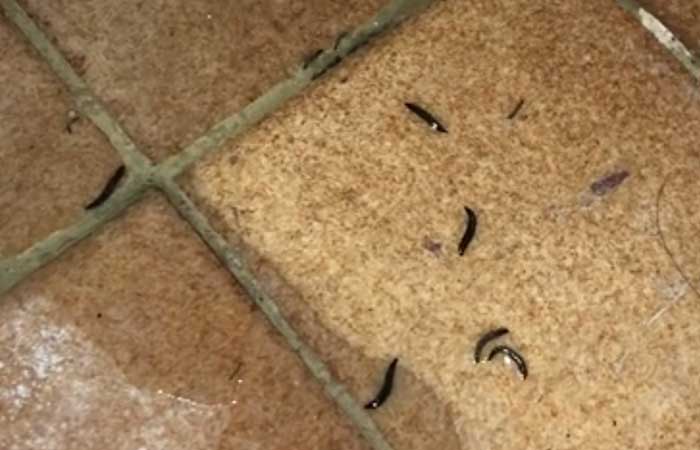
Here’s where else they come from.
- Septic tanks
- Basement sinks
- Outdoor and kitchen sink
- Shower drains
- Soil containing sewage
- Sewers
Spotting Drain Fly Infestation In Toilet
Drain fly infestation extends beyond finding tiny worms in your toilet. Of course, larvae signify drain fly intrusion, but is it the only red flag? Here are a few other ways to spot drain flies in your toilet.
Observing the Larvae
There are around 160,000 species of moths in the world. Therefore, differentiating them from one another isn’t a child’s play. Every moth has distinct-looking larvae, so how can you spot the drain fly maggots?
Here are some general observations that might help.
- Drain fly larvae are typically transparent and have black heads.
- Their heads do not contain eyes that are commonly seen in other moth species.
- They do not have legs but contain numerous tiny rings. A few rings even have plates on one side.
- Oftentimes, they are only 0.17-0.20 inches long and quite challenging to spot
- Their shape resembles that of a flattened cylinder, but it’s thinner and longer.
For your information: It is hard for drain fly larvae to feed underwater. They do so with a dark tube situated at their back.
Further, they feed on the bacteria in your toilet, and they develop into the pupal stage after 9 days to 2 weeks.
Perform a Test
Although this test isn’t specifically for your toilet, they’ll infest it soon if you spot visible signs of drain fly existence in your bath.
Follow the steps below to perform the test.
- Cut a small piece (about 3 inches long) of duct tape and place it on the drain top.
- Let it sit overnight.
- If your bath is exposed to drain flies, they’ll come overnight and try to land on the surface. Eventually, they’ll stick to the tape and won’t find a way out.
The duct tape test is a clever hack to determine drain fly intrusion and take precautionary measures before it further spreads.
Methods to Eliminate Drain Fly Larvae
Anyone would rarely be happy knowing they share their living space with drain flies. If you find yourself amidst such an annoying issue, you can try several ways to get rid of the larvae and stop drain fly infestation.
Although a quick way to remove larvae is to flush the toilet, it doesn’t offer a permanent solution. Managing them for the time being with a quick hack sounds tempting, but it is always better to go with a long-term solution.
Natural Ways to Eliminate Drain Flies
If you do not like dealing with harsh chemicals, fret not. We’ve curated a list of some natural ways to get rid of drain fly larvae before it wreaks havoc in your toilet.
- Hot water. The simplest method to stop drain fly larvae from intruding your toilet is to pour boiling water 2-3 times a day for about 2 weeks. This practice will prevent the overnight return of drain flies and stop them from laying eggs.
- Boiling water + sugar + vinegar + soap. This thick, sweet solution will trap the flies in water and keep them from invading your toilet.
- Vinegar + baking soda + salt. These readily available materials in your home are more helpful than you can think. The powerful combination of baking soda and vinegar can reach places where hot water alone does not. Let this solution sit overnight, and flush your toilet in the morning.
- Boiling water + bleach. Another robust and efficient home remedy is the mixture of hot water and bleach. Pour the mix into your toilet and scrub away the larvae. This method works wonders but only if you do it regularly for a week. It will prevent flies from laying eggs in your toilet and drains.
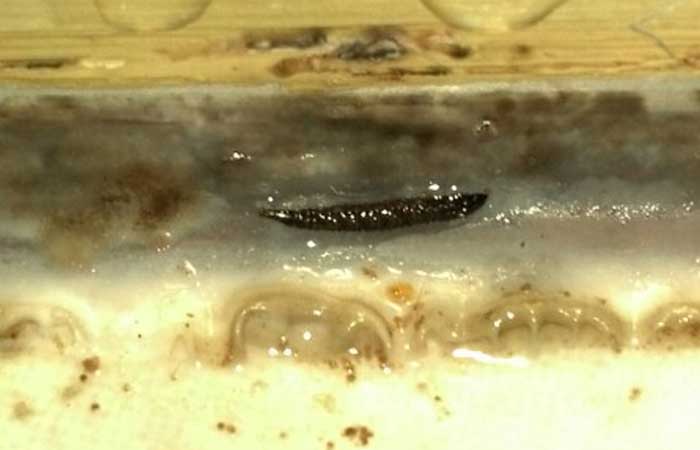
Removing Drain Flies With Chemicals
Let’s face it: We aren’t fond of chemicals, but they are excellent at what they do: eliminating drain fly larvae in our case.
You do not need any special chemical cleaners to kill drain fly larvae. However, make sure you do not get creative when using the standard ones.
For instance, mixing them with other chemicals to make the cleaning more effective won’t get you anywhere. Instead, stick to basics, and you’ll see the results yourself.
Use Standard Cleaners
After flushing your toilet with any natural remedies stated above, you can clear the remaining larvae with any chemical product like Bio-clean, Dow, or Drano.
Drain the liquid, let it sit for a few minutes, scrub it around your toilet, and flush out the residue.
Go for Repellents and Chemical Sprays
Several commonly used pest control sprays work excellent for removing drain fly larvae. However, note that a few chemicals are pretty strong and might damage your pipes. Therefore, it is best to mix them with water.
As a rule of thumb, always read the instruction manual. The top suggestions for removing drain fly larvae include.
- American BioSystems. Although this is typically used for commercial purposes, it is an option for you if you can’t get rid of the fly larvae. It works magically to clear the larvae and bacteria from your toilet.
- Green Gobbler. A popular choice among most homeowners, Green Gobbler, is safe to go down the drains and pipes. Pour the liquid and let it do its job.
Tips to Prevent Drain Fly Intrusion In Your Home
We aren’t new to the phrase, “Prevention is better than cure.” The same applies to the drain fly larvae infestation. If you spot their larvae anywhere in your home, perhaps your indoor environment offers them a suitable atmosphere to thrive.
The catch is to make your house the least favorite place for them. You can do so by:
- Keeping the pipes clean by frequently flushing them with natural remedies or chemical solutions
- Closing the drain that goes days without use
- Keeping an eye on stagnant water near your home
- Not leaving dirt-laden and moist mops in water buckets
- Checking for drain fly infestation time and again (through duct tape method or observing the larvae in the toilet bowl)
- Flushing the toilet regularly
- Adhering to the best cleaning practices
Closing Notes
Drain flies, like other creatures, are naturally found in the environment. While you cannot stop them from existing, what you can do, however, is take preventive measures to avoid their intrusion into your home.
Otherwise, they won’t take long to lay eggs, and soon you’ll spot ugly-looking worms in your toilet.
Instead of fretting over finding them in your toilet, try a few tips discussed above to kill them and stop their infestation permanently.

